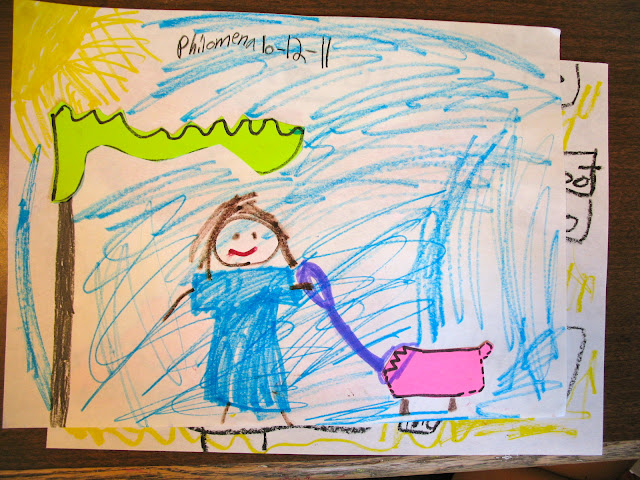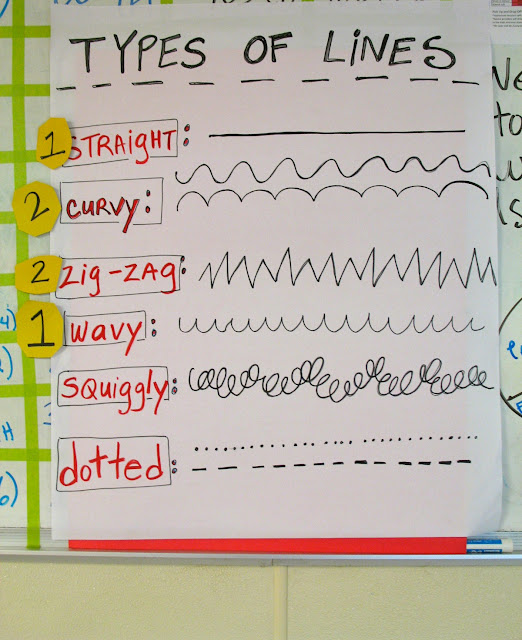First we discussed the difference between a contour line drawing and an outline.
Contour line drawings include lines that are both inside and outside of the forms we see.
We also discussed what it means to draw from observation.
Next I demonstrated how to create a successful blind contour line drawing from observation. When you create a blind contour line drawing, you DO NOT look at your paper. Instead, you use a continuous line that takes you from one object to the next. You move your hand very slowly and record every detail and edge that you see. You need to look closely in order to create a drawing that actually looks like what you are observing.
 |
| Blind Contour Line Drawing |
Next, I demonstrated creating a contour line drawing of the still life objects. Students could now look at their paper periodically while drawing, in order to make sure their objects were placed on the page in a way that made sense. I reminded the students nearly every second to look up almost all the time in order to draw what they are seeing, and not what they think they see (which are symbols of objects in our mind). The more slowly students drew, and the less the more they observed their objects, the more realistic their drawings came out.
 |
| Contour Line Drawing By Jenny |
Some of the students are still struggling to create a successful drawing from observation, but here are some examples of students who were able to slow down and record what they see.











































